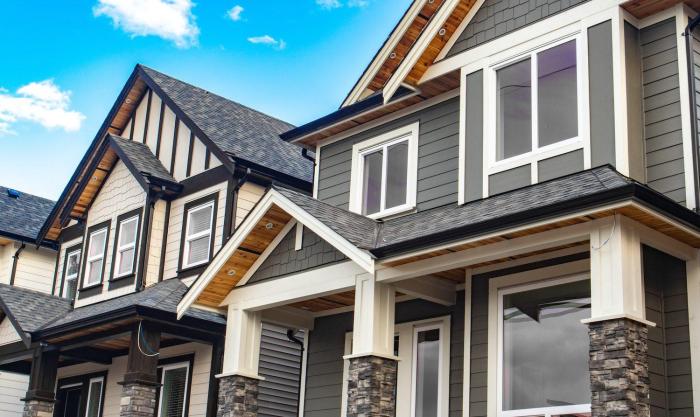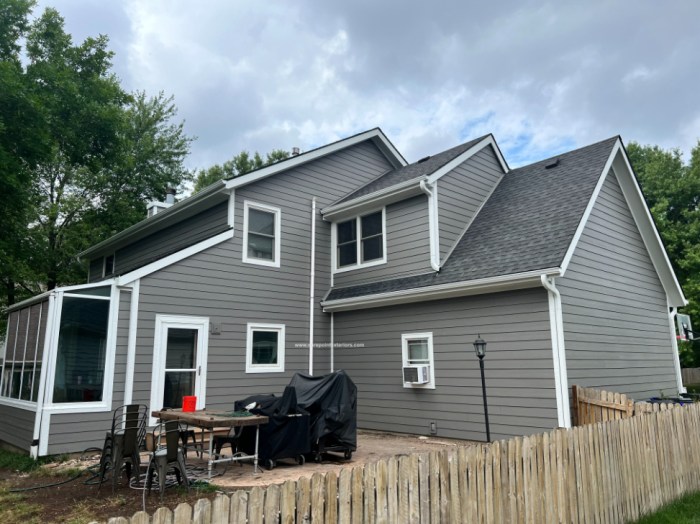Exploring New Home Siding Options: A Comprehensive Guide
Delving into the realm of new home siding options, this guide unveils a plethora of choices and considerations that can transform the look and feel of your home. From traditional materials to eco-friendly options, get ready to discover the perfect siding solution for your dream home.
Overview of New Home Siding Options
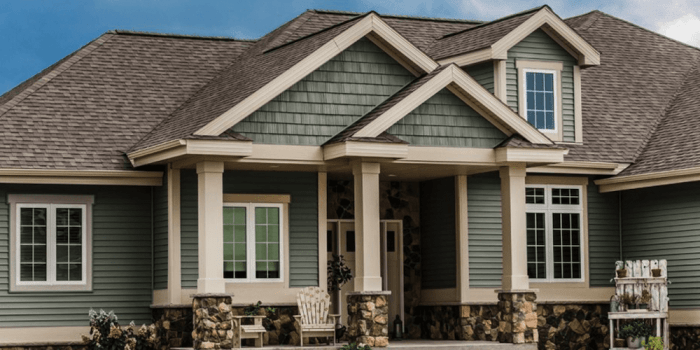
When it comes to choosing the right siding for a new home, it is essential to consider both aesthetics and functionality. The siding not only enhances the curb appeal of the house but also provides protection against the elements, such as rain, wind, and snow.
Selecting the appropriate siding material can significantly impact the overall look and durability of your home.
Factors to Consider When Selecting New Home Siding Options
- Material Durability: Consider the longevity of the siding material and how well it can withstand weather conditions in your area.
- Maintenance Requirements: Evaluate the amount of maintenance and upkeep needed for each siding option to ensure it fits your lifestyle.
- Aesthetic Appeal: Look for siding options that complement the architectural style of your home and enhance its overall appearance.
- Energy Efficiency: Choose siding materials that offer insulation properties to help regulate indoor temperatures and reduce energy costs.
Benefits of Updating Home Siding
- Improved Curb Appeal: Upgrading your home siding can instantly boost its visual appeal and increase its market value.
- Enhanced Protection: New siding provides better protection against moisture, pests, and other external elements that can damage your home.
- Increased Energy Efficiency: Modern siding materials offer improved insulation, leading to lower energy bills and a more comfortable indoor environment.
- Higher Resale Value: Investing in quality siding can attract potential buyers and result in a higher resale value for your home.
Types of Siding Materials
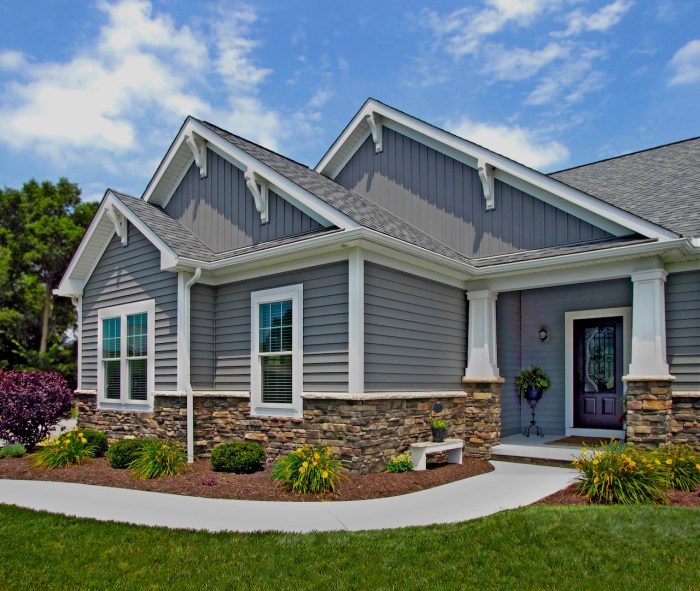
Vinyl, wood, fiber cement, metal, and stone are popular choices for home siding materials, each with its own unique features and benefits. Let's explore the characteristics of these siding materials to help you make an informed decision for your home.
Vinyl Siding
Vinyl siding is a popular choice due to its affordability, low maintenance requirements, and versatility in design options. It is durable, resistant to rot and insects, and can last for decades with proper care. However, extreme temperatures can cause vinyl siding to warp or crack, and it may not be as environmentally friendly as other options.
Wood Siding
Wood siding offers a natural and timeless look to homes, with options like cedar, pine, and redwood. It provides excellent insulation and can be easily painted or stained to match your desired aesthetic. However, wood siding requires regular maintenance such as painting, staining, and sealing to protect it from moisture, pests, and rot.
Fiber Cement Siding
Fiber cement siding is a durable and low-maintenance option that can mimic the look of wood or masonry without the same level of upkeep. It is resistant to fire, insects, and rot, making it a long-lasting choice for homeowners. However, fiber cement siding can be more expensive upfront compared to other materials.
Metal Siding
Metal siding, such as steel or aluminum, is known for its durability, weather resistance, and energy efficiency. It requires minimal maintenance and can be recycled at the end of its lifespan, making it an eco-friendly option. However, metal siding may dent or scratch easily, and it may not be suitable for areas with high humidity or salt exposure.
Stone Siding
Stone siding, made from natural stone or manufactured stone veneer, provides a luxurious and elegant appearance to homes. It offers exceptional durability, weather resistance, and insulation properties. However, stone siding can be costly to install and may require professional expertise for proper installation.
Color and Style Choices
When it comes to choosing the color and style of siding for your home, it's important to consider the impact it will have on the overall appearance of your property. The color of your siding can greatly influence the curb appeal of your home and how it blends in with the surrounding environment.
Additionally, the style of siding you choose can complement the architectural design of your home and enhance its aesthetic appeal.
Impact of Siding Color
The color of your siding can significantly affect the look and feel of your home. Lighter colors can make a home appear larger and more inviting, while darker colors can add a sense of sophistication and drama. Neutral colors like beige, gray, and white are timeless choices that can work well with various architectural styles.
On the other hand, bold colors like navy blue, forest green, or even red can make a statement and add personality to your home.
Trending Color Palettes and Styles
Currently, trending color palettes for home siding include earthy tones like sage green, warm neutrals like taupe, and classic shades like navy blue. Mixing and matching different colors to create a unique look is also gaining popularity. As for styles, vertical siding, board and batten, and shake siding are some of the trending options that can give your home a modern and stylish appearance.
Choosing the Right Color and Style
When selecting a siding color and style, it's essential to consider the architectural design of your home. For traditional homes, classic colors and styles like horizontal lap siding may be the best choice
It's also important to take into account the surrounding landscape and the overall aesthetic you want to achieve.
Eco-Friendly Siding Options
When it comes to choosing siding materials for your home, opting for eco-friendly options can make a significant impact on the environment. These materials are not only sustainable but also contribute to energy efficiency and help reduce your carbon footprint.
Recycled Wood Siding
- Recycled wood siding is made from salvaged wood that has been reprocessed for use in siding applications.
- This eco-friendly option helps reduce the demand for new wood, preserving forests and natural habitats.
- Using recycled wood siding can give your home a unique, rustic look while promoting sustainability.
Reclaimed Metal Siding
- Reclaimed metal siding is sourced from discarded metal materials that are repurposed for siding installations.
- By choosing reclaimed metal siding, you are diverting metal waste from landfills and promoting recycling efforts.
- This durable and low-maintenance option can enhance the modern aesthetic of your home while being environmentally conscious.
Composite Materials Siding
- Composite materials siding is made from a combination of recycled materials such as plastic, wood fibers, and other components.
- These materials offer the durability of traditional siding options while utilizing recycled content for a more sustainable choice.
- Composite materials siding can come in a variety of styles and colors, providing versatility for homeowners seeking eco-friendly alternatives.
Installation and Maintenance Tips
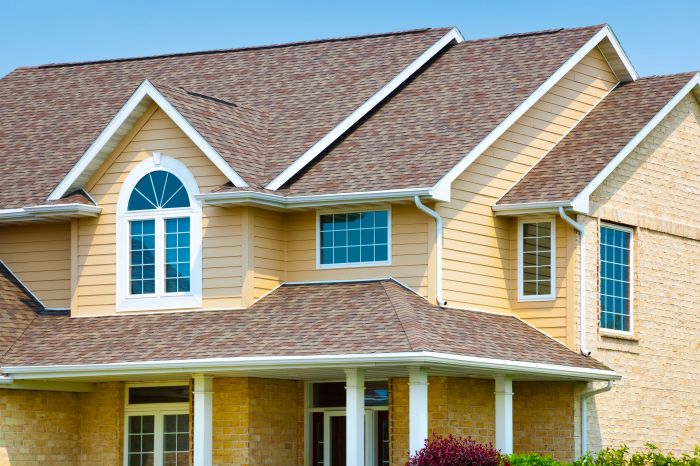
When it comes to installing new home siding, there are several important steps to consider. Proper maintenance is also crucial to ensure the longevity of different siding materials. Below, we will discuss the key points to keep in mind for both installation and maintenance, as well as how to address common issues that may arise with home siding.
Installation Steps
- Prepare the surface: Make sure the surface where the siding will be installed is clean, smooth, and free of any debris.
- Measure and cut: Accurately measure the dimensions of the area to be covered and cut the siding panels accordingly.
- Install the starter strip: Begin by installing the starter strip at the bottom of the wall to ensure a secure base for the rest of the siding.
- Attach the siding panels: Securely attach the siding panels to the wall using the appropriate nails or screws, following the manufacturer's instructions.
- Finish with trim: Complete the installation by adding trim pieces around windows, doors, and corners for a polished look.
Maintenance Tips
- Regular cleaning: Keep your siding clean by washing it with a mild detergent and water to remove dirt, grime, and mold.
- Inspect for damage: Routinely inspect your siding for any signs of damage, such as cracks, chips, or warping, and address them promptly.
- Repainting: If you have painted siding, consider repainting it every few years to maintain its appearance and protect it from the elements.
- Seal gaps and cracks: Seal any gaps or cracks in the siding to prevent water infiltration and potential damage to the underlying structure.
Common Issues and Solutions
- Mold and mildew growth: To combat mold and mildew, clean your siding regularly and ensure proper ventilation around your home.
- Warped or loose panels: If you notice warped or loose siding panels, secure them back in place or replace them if necessary to maintain structural integrity.
- Fading color: To prevent fading, choose siding materials with UV-resistant finishes and consider applying a protective coating.
- Holes or punctures: Patch up any holes or punctures in your siding with the appropriate material to prevent water damage and pests.
Outcome Summary
In conclusion, the world of new home siding options is vast and exciting, offering endless possibilities to enhance your home's curb appeal and functionality. Whether you prioritize durability, aesthetics, or sustainability, there's a siding choice out there waiting to elevate your living space to new heights.
Common Queries
What factors should I consider when selecting new home siding options?
Consider factors like durability, maintenance requirements, cost, and how well the siding complements your home's architectural design.
Are there any trending color palettes for home siding?
Trending color palettes include earthy tones, bold neutrals, and shades of gray that can give your home a modern and timeless look.
How can eco-friendly siding options contribute to energy efficiency?
Eco-friendly siding materials like recycled wood and composite materials can provide better insulation, reducing energy consumption and lowering your carbon footprint.
What are some common issues with home siding and how can they be addressed?
Common issues include warping, fading, or rotting. Regular maintenance, proper installation, and timely repairs can help address these issues and prolong the lifespan of your siding.

